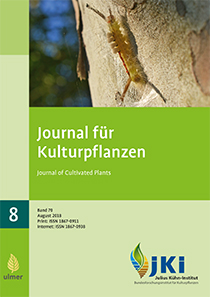Intensity and risk of chemical pesticides when cultivating sugar beet, silage maize and winter wheat in crop rotations
Keywords:
treatment index, SYNOPS, national action plan plant protection (NAP), environmental risk, pesticidesAbstract
Corrigendum
In the article „Intensity and risk of chemical pesticides when cultivating sugar beet, silage maize and winter wheat in crop rotations” by Brauer-Siebrecht, W., Jacobs, A., Koch H.-J., Strassemeyer, J. und Märländer, B., which was published on pages 184-195, issue 70, no. 6, corrections were made in Fig. 3. In Fig. 3 a vertical dashed/dotted line was added, which enables a distinction between the environment compartments field and ecoton and soil, respectively. Furthermore, the limit of risk tolerance is now shown as a horizontal dotted (not dashed) line in the upper and lower part of the figure. Finally, the mean was added within the box plots – shown as dashed line. This correction does not affect the conclusions of the paper.
Abstract
The use of chemical pesticides serves at reducing crop yield losses, but is also criticised because of possible ecological risks. The German national action plan on sustainable use of plant protection products aims at reducing these risks. The current study investigated pesticide applications on two sites in Germany in 2011–2014, comparing different crop rotations with sugar beet, silage maize and winter wheat as well as silage maize under continuous cultivation. The treatment index was used as an indicator for the pesticide application intensity. The environmental risk was calculated by the simulation model “SYNOPS” for reference organisms in the non-target compartments “surface water”, “field margin biotope” and “soil”. The treatment index varied between crop rotations from 5.1 to 20.6 and the environmental risk was mostly calculated as very low to medium. No correlation between intensity and environmental risk of crop rotations was found. The lowest treatment index was calculated for silage maize in continuous cultivation, but, the environmental risk was higher. Some herbicidal and fungicidal active ingredients used in silage maize and winter wheat were identified for which non tolerable environmental risks were calculated. Consequences for the Integrated Pest Management result from the choice of active substances with lower toxicity, a reduction of the entire application rate and non-chemical measures like mechanical weed control or resistant varieties.
DOI: 10.1399/JfK.2018.06.02.corr, https://doi.org/10.1399/JfK.2018.06.02.corr








